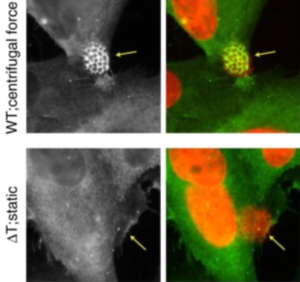Sialic Acid Mediated Mechanical Activation of β 2 Adrenergic Receptors by Bacterial Pili. Virion et al, Nat Commun, 10 (1), 4752 2019 Oct 18
News linked to Mathieu Coureuil & Xavier Nassif

Meningococcus utilizes β-arrestin selective activation of endothelial cell β2 adrenergic receptor (β2AR) to cause meningitis in humans. Molecular mechanisms of receptor activation by the pathogen and of its species selectivity remained elusive. We report that β2AR activation requires two asparagine-branched glycan chains with terminally exposed N-acetyl-neuraminic acid (sialic acid, Neu5Ac) residues located at a specific distance in its N-terminus, while being independent of surrounding amino-acid residues. Meningococcus triggers receptor signaling by exerting direct and hemodynamic-promoted traction forces on β2AR glycans. Similar activation is recapitulated with beads coated with Neu5Ac-binding lectins, submitted to mechanical stimulation. This previously unknown glycan-dependent mode of allosteric mechanical activation of a G protein-coupled receptor contributes to meningococcal species selectivity, since Neu5Ac is only abundant in humans due to the loss of CMAH, the enzyme converting Neu5Ac into N-glycolyl-neuraminic acid in other mammals. It represents an additional mechanism of evolutionary adaptation of a pathogen to its host.
